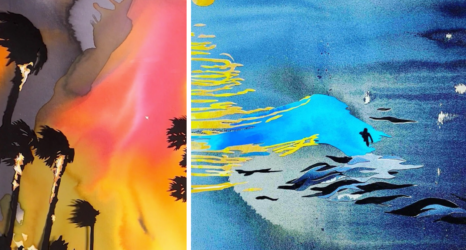The Elizabeth A. Sackler Center for Feminist Art opened at the Brooklyn Museum on March 23, 2007—and to commemorate the upcoming 10-year anniversary, the institution is presenting A Year of Yes: Reimagining Feminism at the Brooklyn Museum, a collection of linked exhibitions and programs running from October 21 to the beginning of 2018.
[stackerdecks_id]MTdzNTA1MA==[/stackerdecks_id]
The celebration kicks off with “Beverly Buchanan—Ruins and Rituals,” an exhibit featuring around 200 pieces from an artist who positioned humble Southern shacks as places to take pride in. “She is an artist who is extremely little known, but who thought about and worked brilliantly with some of the most important and cutting-edge mediums and ideas in the art world in the 70s and the 80s and beyond,” says Catherine J. Morris, Sackler curator, “and by including her into the history of feminist art, conceptual art and land art, she changes the entire dialogue. Or she should, in my opinion.”
Buchanan can also be found in “We Wanted a Revolution: Black Radical Women, 1965-1985,” along with other important black female artists like quilter Faith Ringgold, filmmaker Julie Dash—whose Daughters of the Dust is in the Library of Congress’ National Film Registry, and painter Emma Amos—who has celebrated Angela Davis, Jackie Joyner-Kersee and Muhammad Ali in her work. The exhibit will examine “some of the problems in feminism, some of the ways that black women didn’t feel welcome in the second-wave feminist movement,” says Morris.
Georgia O’Keeffe helped pave the way for modern feminist artists, and her legacy is thoroughly considered in “Georgia O’Keeffe: Living Modern.” It is fitting she was chosen—not only for her contribution to feminist art, but because the Brooklyn Museum was so instrumental in shaping her career, giving her a solo exhibition in 1927. With this exhibit, says Morris, the museum “is trying to reframe the standard story” about O’Keeffe:
Everybody knows Georgia O’Keeffe, [but] what are some of the things about Georgia O’Keeffe that people don’t know so well? What is some of the history about her that has been maybe glossed over or misunderstood because of the way that she’s typically been presented? For instance, one of the ways that she’s typically been presented, throughout her career, was as this young, emerging, brilliant artist who was very much influenced and shaped by Alfred Stieglitz. And, in fact, this exhibition really points to the fact that Georgia O’Keeffe was not simply an artist who was sort of shaped by this older man, but was somebody who had a very clear idea of who she was and what she wanted and how she was perceived in the world. And she worked hard at managing and developing that self-perception, that perception in the world.
O’Keeffe and over 1,000 other women are honored in Judy Chicago’s “The Dinner Party,” permanently installed in the Sackler Center. “The Roots of ‘The Dinner Party'”gives visitors the chance to see what went into making it—including, according to Morris, “the collective thinking that has to go into a work of this size and this scale and this ambition.”
Perhaps the most surprising choice for an exhibit is “Iggy Pop Life Class,” showcasing 53 drawings of the rocker by 22 art students. A man as the subject of a feminist exhibit? And Iggy Pop of all men? “I think most people, [when] you say ‘Iggy Pop,’ imagine this half-naked or naked guy jumping around a stage, screaming and cutting himself or whatever,” says Morris. “But this is a case where he is exposing himself in a much more open sort of way as a recumbent figure in a drawing class, where people draw his nude, relaxed, kind of older, not beautiful, necessarily, body. And so that obviously also becomes a dialogue with the history of art because it’s typically a woman who is in that position.”
Finally, the museum reviews its own history in “A Feminist Timeline.”
“When you do a timeline of an institution, you talk about the directors, you talk about the major donors, you talk about the philanthropists who built the place,” Morris says, “and they’re typically men in an institution that’s been around as long as this one has, and is built on the model that it was built on, so we’ve gone into the history of the museum and dug around, looking for the stories that make the history of this place more interesting and more human.”
But A Year of Yes is not just looking at the past. It will also examine the current status of feminism and its potential future. “I feel like any time you open up social media, every few months, there’s some sort of flurry of activity around younger people or whoever debating whether feminism is still a pertinent term,” says Morris. “And so A Year of Yes is a way of trying to frame [feminism] as a positive thing and as a forward-looking thing, and [is] an acknowledgment of its true presence in our culture, even if simultaneously people do continue to push on it a bit.”
With A Year of Yes, the Brooklyn Museum is aiming to show that feminist artists—stretching across a span of decades and styles—have always known exactly how to push back.





